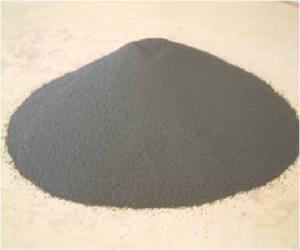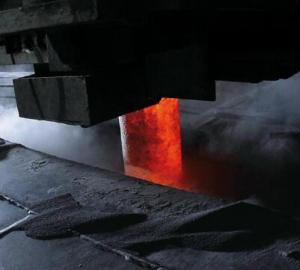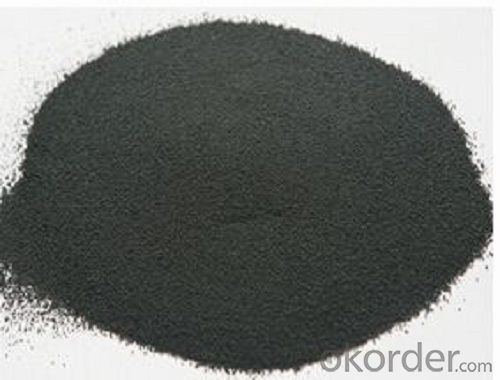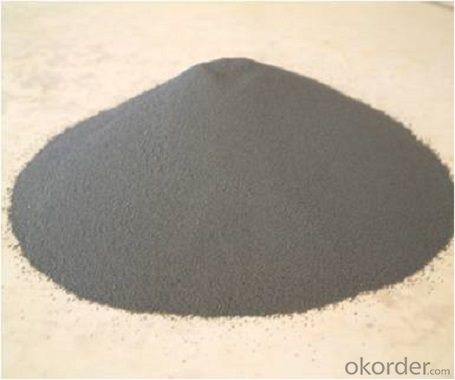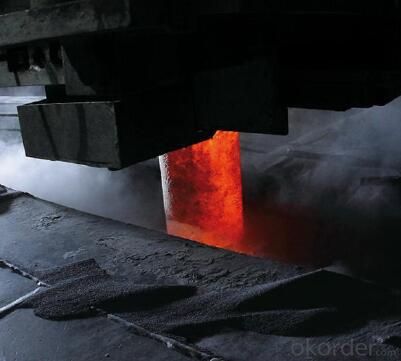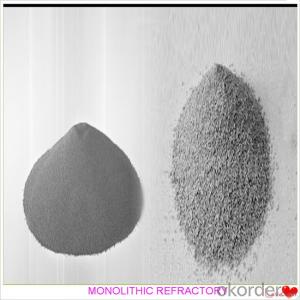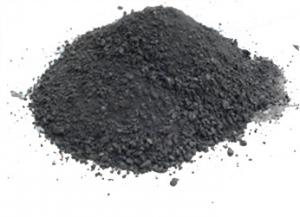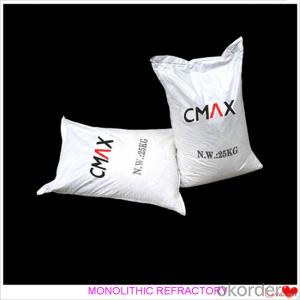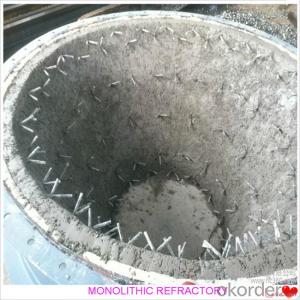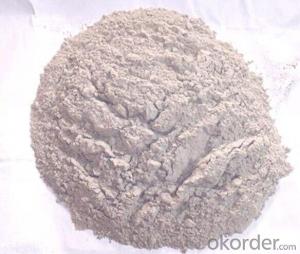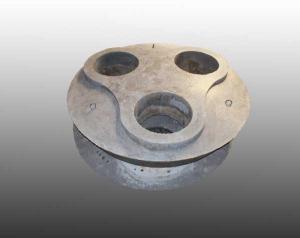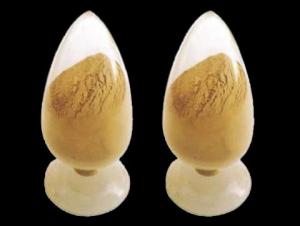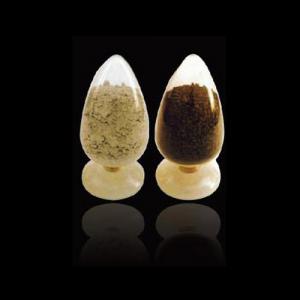Monolithic Refractories for Iron and Steel Industry - Mould Powders / Continuous Casting Powders and Granules
- Loading Port:
- Tianjin
- Payment Terms:
- TT or LC
- Min Order Qty:
- 10 m.t.
- Supply Capability:
- 100000 m.t./month
OKorder Service Pledge
OKorder Financial Service
You Might Also Like
Product Description:
The Mould Powders are composed essentially of CaO-Al2O3-SiO2 with addition of fluxing agents and carbon.
Mold Powders have different functions:
Lubrication between the solidifying strand and mould wall
Control of heat transfer between the strand and mould
Thermal insulation of the liquid steel surface
Prevention of re-oxidation
Inclusion absorption
The above functions are controlled by the following properties:
Basicity
Viscosity
Melting speed
Melting behaviour
Crystallization
The choice of a mould powder depends on:
Mould size
Oscillation conditions
Casting speed
Steel grade
Technical Data:

FAQ
Q:Are you a trading company or manufacturer?
A:CNBM is a large-scale central governmental industrial group with its own manufacturing sector, research and development sector, trading sector and logistics sector.
Q:I have some special requirement about specifications.
A:We have a well-rounded product range, which endows us with the capability of applying many special specifications. Please feel free to contact us with yours.
Q:Do you accept OEM service?
A:Yes, we do.
Q:What is your delivery time?
A:It depends on the size/complexity of your order and our own production schedule. Usually we provide a faster delivery than the industry's average.
Q:What is the payment term?
A:Our payment terms are negotiable.
Q:Can I have my own logo on the product?
A:Sure, we can apply your own logo on the products according to your drawings.
- Q: How do monolithic refractories contribute to the overall efficiency of ladles and tundishes?
- Monolithic refractories play a crucial role in enhancing the overall efficiency of ladles and tundishes in several ways. Firstly, monolithic refractories are known for their excellent thermal insulation properties. By lining the ladles and tundishes with monolithic refractories, heat losses are minimized, resulting in reduced energy consumption and improved thermal efficiency. This insulation capability also helps in maintaining a consistent temperature within the ladles and tundishes, which is essential for the proper casting and solidification of molten metal. Moreover, monolithic refractories offer superior resistance to thermal shocks and chemical corrosion. Ladles and tundishes are subjected to extreme temperatures and harsh chemical environments due to the contact with molten metal and various fluxes or additives. The use of monolithic refractories ensures a longer service life for ladles and tundishes by preventing cracking, spalling, or erosion caused by these harsh conditions. This, in turn, reduces downtime for maintenance and replacement, leading to increased overall efficiency. Additionally, the flexibility and ease of installation of monolithic refractories contribute to the efficiency of ladles and tundishes. Unlike traditional brick lining, monolithic refractories can be easily formed and installed in various shapes and sizes, allowing for better customization and optimization of ladles and tundishes. This adaptability helps in improving the flow dynamics of molten metal, reducing turbulence, and enhancing the overall casting process efficiency. In summary, monolithic refractories enhance the overall efficiency of ladles and tundishes through their exceptional thermal insulation properties, resistance to thermal shocks and chemical corrosion, and flexibility in installation. By minimizing heat losses, extending service life, and optimizing the casting process, monolithic refractories contribute significantly to the overall efficiency and productivity of ladles and tundishes in the metal industry.
- Q: How do monolithic refractories resist high temperatures?
- Monolithic refractories are designed to resist high temperatures due to their unique composition and structure. These refractories are made from a single piece or material, unlike traditional refractory bricks that are composed of multiple pieces. The main reason why monolithic refractories can resist high temperatures is their high melting point. These refractories are made from materials such as alumina, silica, and magnesia, which have high melting points ranging from 1650°C to 2000°C. This means that they can withstand extreme temperatures without undergoing significant deformation or melting. Furthermore, monolithic refractories possess excellent thermal stability. They have low thermal conductivity, which means they can effectively insulate against heat transfer. This property allows the refractories to maintain their structural integrity even when exposed to rapid temperature changes or thermal shocks. In addition, the monolithic nature of these refractories provides them with enhanced resistance to thermal stress. Unlike traditional refractory bricks, monolithic refractories do not have joints or seams that can be vulnerable to thermal expansion and contraction. This makes them more resistant to cracking or spalling when subjected to high temperatures. Moreover, monolithic refractories can form a protective layer or slag on their surface when exposed to high temperatures. This slag acts as a barrier and prevents direct contact between the refractory material and the hot gases or molten metals, reducing the risk of chemical reactions or corrosion. Overall, the combination of high melting point, thermal stability, resistance to thermal stress, and the ability to form protective slag makes monolithic refractories highly effective in resisting high temperatures. They are widely used in various industries, including steel, cement, glass, and petrochemical, where they are exposed to extreme heat conditions.
- Q: How do monolithic refractories withstand high temperatures in iron and steel production?
- Monolithic refractories are able to withstand high temperatures in iron and steel production due to their composition and unique properties. These refractories are made from a single, continuous material, which eliminates the need for joints or seams that could weaken under extreme heat. Additionally, they have high thermal conductivity and low thermal expansion, allowing them to effectively absorb and distribute the intense heat in the production process without cracking or breaking. Furthermore, monolithic refractories are highly resistant to chemical corrosion and erosion, which is crucial in the harsh environment of iron and steel production. Overall, the combination of these factors enables monolithic refractories to withstand the extreme temperatures involved in iron and steel production.
- Q: How do monolithic refractories contribute to the overall safety of iron and steel operations?
- Monolithic refractories play a crucial role in ensuring the overall safety of iron and steel operations. These refractories are designed to withstand extreme temperatures, chemical reactions, and mechanical stresses, providing a protective barrier to the furnaces, ladles, and other equipment used in these operations. By maintaining the integrity of the refractory lining, monolithic refractories prevent leaks, minimize the risk of thermal shock, and reduce the chances of equipment failure or accidents. This helps to safeguard the workers, prevent damage to the infrastructure, and ensure the uninterrupted production of iron and steel, thus contributing to the overall safety of the operations.
- Q: What are the key properties of monolithic refractories?
- Monolithic refractories are a type of refractory material that are unshaped or shapeless, meaning they do not have a definite form like bricks or tiles. Instead, they are typically composed of a mixture of aggregates, binders, and additives that can be easily molded and installed in various industrial applications. The key properties of monolithic refractories are: 1. High temperature resistance: Monolithic refractories are designed to withstand extremely high temperatures, making them suitable for applications in industries such as steel, cement, glass, and petrochemicals. They can maintain their strength and structural integrity even at temperatures exceeding 3000 degrees Fahrenheit. 2. Thermal shock resistance: Monolithic refractories have the ability to resist thermal shock, which is the sudden change in temperature that can cause cracking or damage to the refractory. This property is essential in environments where rapid heating or cooling occurs, such as in furnaces or kilns. 3. Chemical resistance: Monolithic refractories exhibit excellent resistance to chemical attack and corrosion from molten metals, slag, gases, and other harsh substances. This makes them ideal for use in environments where they come into contact with acidic or alkaline materials. 4. Low porosity: Monolithic refractories have low porosity, which means they have a high density and are less permeable to gases and liquids. This property helps to prevent the penetration of molten metals or corrosive substances into the refractory, ensuring its longevity and performance. 5. Easy installation and repair: Unlike traditional refractory materials like bricks, monolithic refractories can be easily molded and installed in various shapes and sizes. They can be applied by spraying, casting, or ramming techniques, allowing for faster installation and reduced downtime. Additionally, they can be easily repaired or patched if any damage occurs. 6. Good mechanical strength: Monolithic refractories possess adequate mechanical strength to withstand the stresses and pressures encountered during their service life. This ensures their structural integrity, even under high load conditions. Overall, the key properties of monolithic refractories make them a versatile and reliable choice for a wide range of industrial applications where high temperature resistance, chemical resistance, and thermal shock resistance are required.
- Q: What are the main types of monolithic refractories used in the iron and steel industry?
- The main types of monolithic refractories used in the iron and steel industry are castables, plastic refractories, and ramming mixes.
- Q: How do monolithic refractories withstand high temperatures in iron and steel processing?
- Due to their unique composition and design, monolithic refractories have the capability to endure high temperatures in iron and steel processing. Unlike refractories composed of multiple layers, these refractories are made from a single, solid material, which grants them superior thermal conductivity and resistance to thermal shock. One crucial factor that enables monolithic refractories to withstand high temperatures is their high melting point. Typically composed of materials like alumina, magnesia, silica, or zirconia, these refractories possess melting points that exceed the temperatures encountered in iron and steel processing. This ensures that the refractories do not deteriorate or melt when exposed to such extreme temperatures. Additionally, monolithic refractories exhibit excellent thermal insulation properties. With low thermal conductivity, they effectively impede heat transfer from the hot molten metal or gases to the surrounding environment. This insulation property helps sustain high temperatures within the processing units, ensuring efficient and effective iron and steel production. Another significant aspect contributing to the ability of monolithic refractories to withstand high temperatures is their resistance to thermal shock. In iron and steel processing, rapid temperature changes are frequent, which can lead to cracking or spalling in traditional refractories. However, monolithic refractories possess a more homogeneous structure and greater flexibility, enabling them to endure these sudden temperature fluctuations without significant damage. Apart from their composition, the installation method of monolithic refractories also plays a role in their ability to withstand high temperatures. Typically, these refractories are installed using a technique called gunning or shotcreting, where a mixture of refractory material and water is sprayed onto the surface, forming a dense and solid lining. This installation method ensures a strong bond between the refractory and the substrate, enhancing the overall strength and durability of the lining. Overall, monolithic refractories can withstand high temperatures in iron and steel processing due to their high melting point, excellent thermal insulation properties, resistance to thermal shock, and proper installation techniques. These refractories are essential in maintaining the integrity and efficiency of the processing units, facilitating the production of high-quality iron and steel products.
- Q: How are monolithic refractories manufactured?
- Monolithic refractories are manufactured using a specific process that involves several steps. The first step is the selection and preparation of raw materials. These raw materials usually include aggregates, binders, and additives. Aggregates are chosen based on their chemical and physical properties, while binders are used to hold the aggregates together. Additives are included to enhance specific properties of the refractory material. Once the raw materials are selected, they are mixed together in precise proportions to create a homogeneous mixture. This mixture is then blended using various techniques such as dry or wet mixing, depending on the desired characteristics of the final product. After blending, the next step is shaping the refractory material. This can be done through several methods such as casting, gunning, ramming, or spraying. Each method is chosen based on the specific application and requirements of the refractory. Once the refractory material is shaped, it undergoes a curing process. This process involves drying the material at a controlled temperature to remove any excess moisture and allow for the development of desired properties. Finally, the cured refractory material is fired in a kiln at high temperatures. This firing process helps to further strengthen the refractory and enhance its resistance to heat and other harsh conditions. Overall, the manufacturing of monolithic refractories involves careful selection and preparation of raw materials, precise blending, shaping, curing, and firing processes. This ensures the production of high-quality refractory materials that can withstand the extreme conditions found in various industrial applications.
- Q: How do monolithic refractories improve the efficiency of ladle and tundish drying systems?
- The efficiency of ladle and tundish drying systems can be greatly improved by incorporating monolithic refractories. These refractories play a vital role in the steel industry, specifically in the drying process of ladles and tundishes prior to casting molten steel. One key advantage of monolithic refractories lies in their ability to create a seamless lining devoid of joints or gaps. This characteristic ensures that the lining remains strong and resistant to heat loss during the drying process. By maintaining a uniform and continuous lining, monolithic refractories facilitate faster and more effective drying of ladles and tundishes. Moreover, monolithic refractories possess exceptional thermal insulation properties. They exhibit low thermal conductivity, which enables them to effectively retain heat and prevent its dissipation into the surroundings. This insulation capability promotes better heat retention within ladles and tundishes during drying, ultimately leading to quicker and more energy-efficient drying. Furthermore, monolithic refractories demonstrate superior resistance to thermal shock. The drying process subjects ladles and tundishes to rapid temperature changes, which can induce thermal stress and result in cracks or spalling of the lining. However, monolithic refractories exhibit high resistance to thermal shock, ensuring the durability and longevity of the lining. This resistance to thermal shock minimizes the need for frequent repairs or replacements, thereby enhancing the overall efficiency of ladle and tundish drying systems. Additionally, monolithic refractories exhibit good corrosion resistance. They are specifically designed to withstand the harsh conditions and corrosive environments that ladles and tundishes encounter during the drying process. This corrosion resistance helps maintain the integrity of the lining, preventing any degradation or damage that could potentially impact the efficiency of the drying systems. In conclusion, the incorporation of monolithic refractories into ladle and tundish drying systems enhances their efficiency by providing a seamless lining, excellent thermal insulation, resistance to thermal shock, and corrosion resistance. These properties contribute to faster drying times, energy savings, reduced maintenance needs, and increased equipment longevity.
- Q: How do monolithic refractories improve the efficiency of ladle and tundish lining systems?
- The efficiency of ladle and tundish lining systems is greatly enhanced by monolithic refractories in several ways. Firstly, these refractories are made from a single piece of material, eliminating the need for joints or seams. This seamless construction guarantees a lack of weak points in the lining system, reducing the chances of molten metal leakage or infiltration. Moreover, monolithic refractories possess exceptional thermal insulation properties. With their low thermal conductivity, they are able to withstand high temperatures without transferring heat to the surrounding environment. This insulation capability minimizes heat loss from the ladle or tundish, resulting in improved heat retention and energy efficiency. Additionally, it ensures that the desired temperature of the molten metal is maintained, preventing premature solidification and ensuring the necessary fluidity for casting. Furthermore, monolithic refractories exhibit outstanding resistance to chemical attacks caused by molten metal and slag. Their excellent corrosion resistance properties ensure the durability and integrity of the lining, even in the face of aggressive chemical reactions. This resistance to corrosion prolongs the lifespan of the lining system, reducing the need for frequent maintenance and replacement, thereby increasing overall efficiency and reducing downtime. Another advantage of monolithic refractories is their easy installation. Unlike traditional brick or block linings, monolithic refractories can be applied as a single, uniform layer, simplifying and speeding up the installation process. This reduces the time required for lining repairs or replacements, minimizing disruptions to production and enhancing the overall operational efficiency of ladles and tundishes. In conclusion, monolithic refractories enhance the efficiency of ladle and tundish lining systems through their seamless construction, excellent thermal insulation, superior corrosion resistance, and easy installation. These characteristics ensure improved heat retention, reduced heat loss, increased durability, and minimized downtime, resulting in enhanced productivity and cost-effectiveness for metal casting processes.
Send your message to us
Monolithic Refractories for Iron and Steel Industry - Mould Powders / Continuous Casting Powders and Granules
- Loading Port:
- Tianjin
- Payment Terms:
- TT or LC
- Min Order Qty:
- 10 m.t.
- Supply Capability:
- 100000 m.t./month
OKorder Service Pledge
OKorder Financial Service
Similar products
Hot products
Hot Searches
Related keywords

